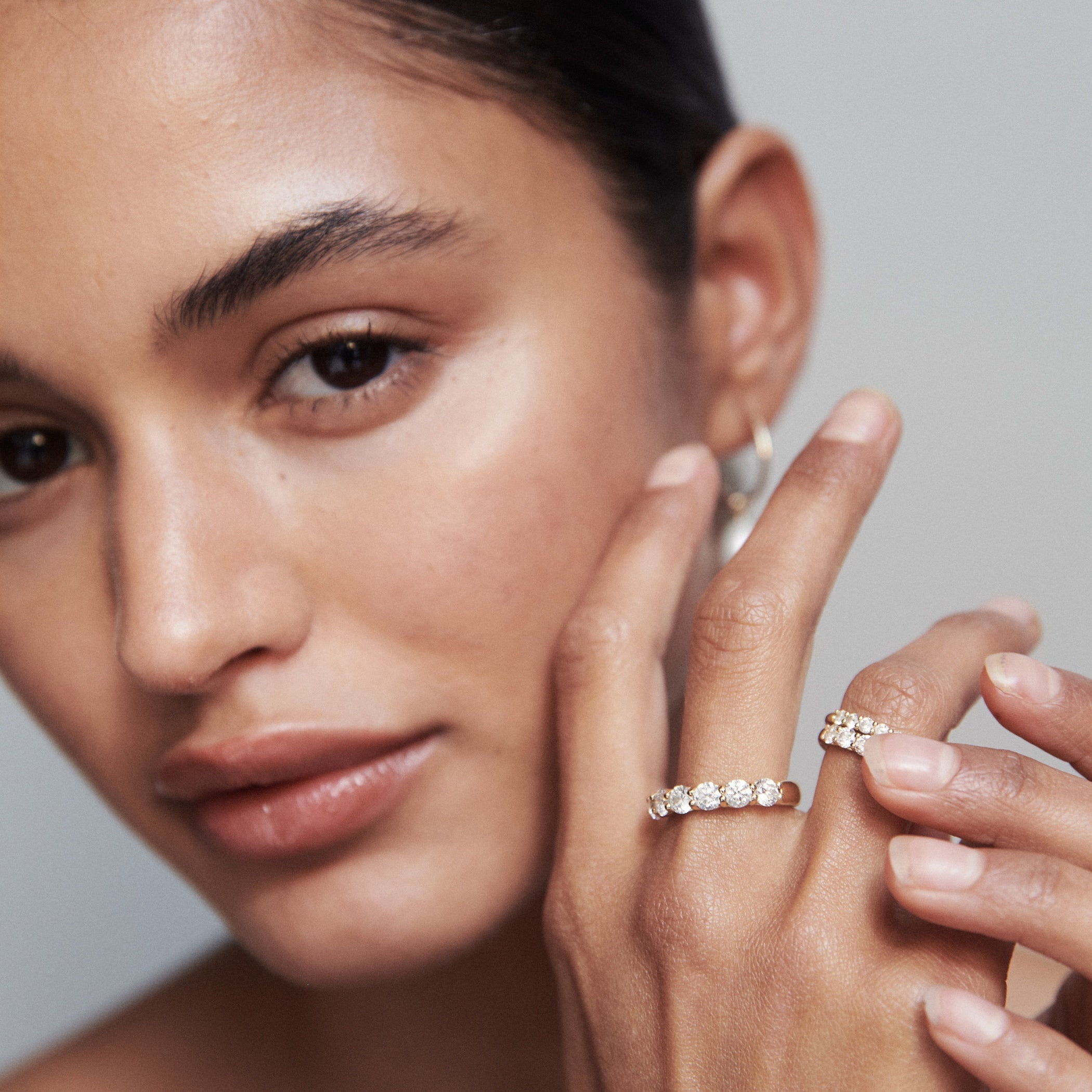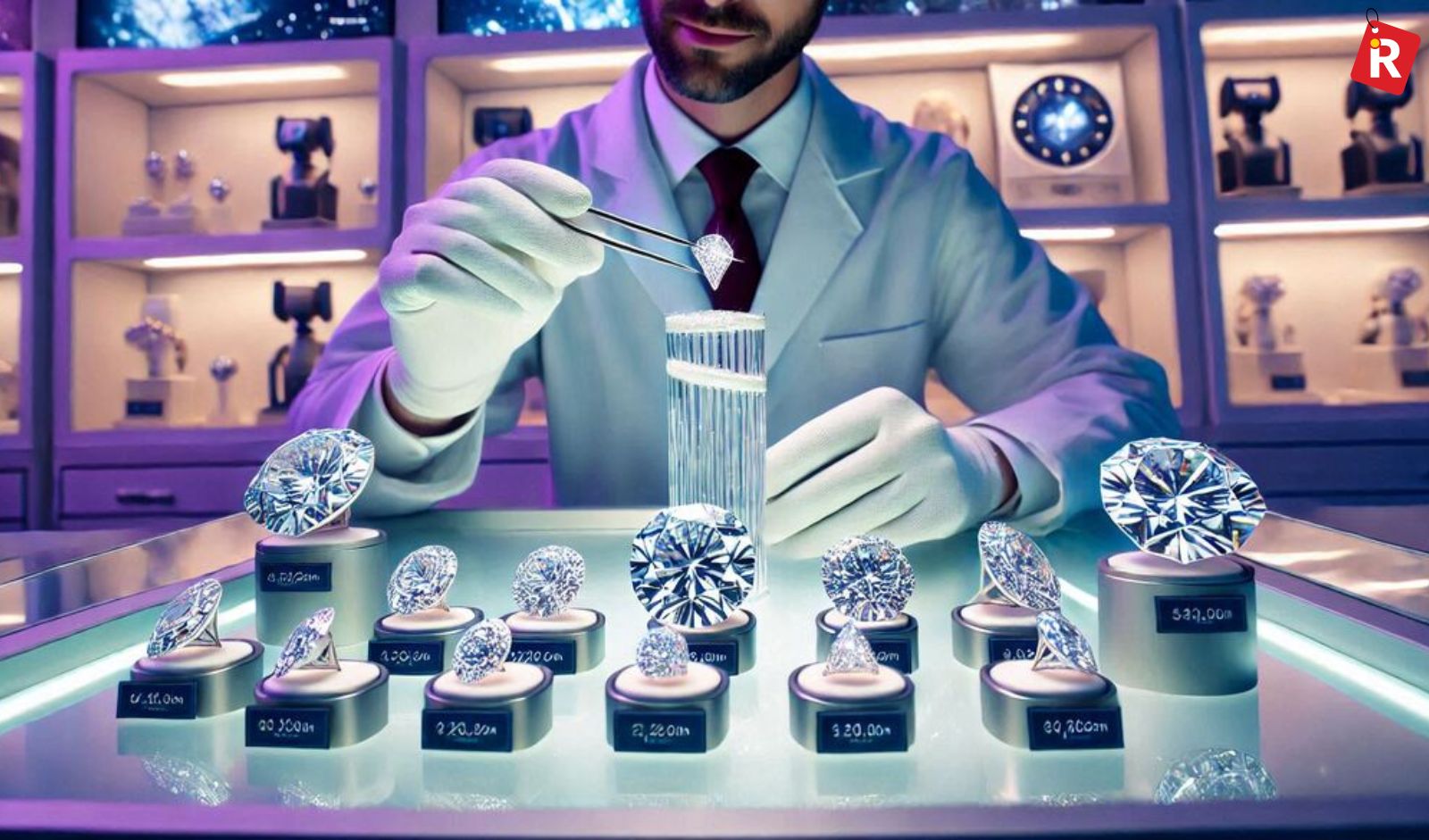Introduction
Diamonds have long captivated the human imagination with their brilliance, rarity, and symbolism. Whether set in engagement rings or displayed in high-end jewelry, diamonds are prized for their ability to capture light and radiate elegance. Yet, behind their sparkle lies a complex world of craftsmanship and innovation. Two terms gaining increasing relevance in the jewelry industry are: what does cut diamond mean, lab grown diamonds. Understanding these can help consumers make more informed and ethical choices when purchasing diamonds.
What Does a Cut Diamond Mean?
The Role of Cut in Diamond Quality
The phrase “cut diamond” often causes confusion among consumers. Many assume it refers to the shape of the diamond—such as round, oval, or princess—but in gemology, “cut” specifically pertains to how well the diamond has been shaped and faceted from its rough form.
A diamond’s cut affects how light travels through the stone, which in turn influences its brilliance, fire, and scintillation. The Gemological Institute of America (GIA) rates cut quality on a scale from Excellent to Poor. These grades are based on factors like symmetry, proportions, and polish.
For example, two diamonds of the same carat weight and clarity can look vastly different in brightness and sparkle if one has an Excellent cut and the other a Poor cut. A well-cut diamond will reflect light internally from one mirror-like facet to another and disperse it through the top of the gem. In contrast, a poorly cut diamond allows light to escape from the sides or bottom, making it appear dull and lifeless.
Precision Meets Artistry
Cutting a diamond requires both precision and artistry. Master cutters use mathematical calculations to determine the optimal angles and proportions that maximize the stone’s light performance. This intricate process takes into account not only the geometry but also the type of diamond and its natural inclusions.
In many cases, maximizing carat weight may come at the expense of cut quality. This trade-off highlights the importance of understanding what does cut diamond mean, lab grown diamonds especially when weighing aesthetic versus financial value in diamond purchases.
The Rise of Lab Grown Diamonds
What Are Lab Grown Diamonds?
Lab grown diamonds, also known as synthetic or man-made diamonds, are created in controlled laboratory environments using advanced technological processes. These diamonds are chemically, physically, and optically identical to natural diamonds. The two primary methods of creating them are High Pressure High Temperature (HPHT) and Chemical Vapor Deposition (CVD).
Unlike cubic zirconia or moissanite, which are diamond simulants, lab grown diamonds are real diamonds. They contain the same carbon crystal structure and can be certified by gemological labs using the same criteria applied to natural diamonds.
Environmental and Ethical Advantages
One of the main reasons for the increasing popularity of lab grown diamonds is their sustainability. Traditional diamond mining has long been criticized for its environmental impact, which includes habitat destruction, water pollution, and significant carbon emissions. Additionally, concerns over “blood diamonds”—gems mined in war zones and sold to finance armed conflict—have pushed ethical considerations to the forefront of consumer awareness.
Lab grown diamonds offer a cleaner, more ethical alternative. Producing them in a lab requires significantly less land and water and emits fewer carbon emissions. As a result, they appeal to environmentally-conscious buyers and those seeking conflict-free gems.
Comparing Natural and Lab Grown Diamonds
Cost and Value
Lab grown diamonds typically cost 30–50% less than their mined counterparts of comparable size and quality. This price difference allows consumers to choose higher-quality stones or larger carat sizes without stretching their budgets. However, it’s worth noting that resale value for lab grown diamonds may not match that of natural ones, as the market for synthetics is still evolving.
When it comes to cut quality, the process for evaluating and grading is identical between lab grown and natural diamonds. Therefore, the same principles apply when asking what does cut diamond mean, lab grown diamonds in the context of shopping for either type.
Availability and Customization
Another advantage of lab grown diamonds is their availability and potential for customization. Because they are created in controlled settings, the occurrence of undesirable inclusions is often lower, and the stones can be engineered for optimal quality. Jewelers can work with customers to produce stones that meet specific criteria for cut, color, clarity, and carat, resulting in a personalized and often superior product.
Industry Trends and Consumer Preferences
The diamond industry has undergone significant shifts over the past decade. Millennials and Gen Z, who place high value on ethics, sustainability, and transparency, are driving the demand for lab grown diamonds. According to a 2023 Bain & Company report, the lab grown diamond market has grown at an annual rate of 15–20% and is expected to reach $10 billion in sales by 2026.
Even established jewelers such as De Beers and Pandora have introduced lab grown collections, signaling a major shift in the market. This growing acceptance reinforces the relevance of understanding terms like what does cut diamond mean, lab grown diamonds in today’s jewelry landscape.
Case Study: Choosing Between Two Similar Diamonds
Consider a buyer looking at two 1-carat diamonds. One is a natural diamond with a Very Good cut, and the other is a lab grown diamond with an Excellent cut. Visually, the lab grown stone may appear more brilliant and lively due to its superior cut. Financially, it could also be 40% less expensive. This scenario underscores the value of evaluating cut quality and considering lab grown options for the best balance of aesthetics, ethics, and price.
Conclusion
In the quest for the perfect diamond, understanding what cut really means is essential. It’s not just about the shape but the craftsmanship and mathematical precision that determine how a diamond sparkles. Similarly, as technology evolves, lab grown diamonds are offering a revolutionary and responsible alternative to mined gems.
With their environmental benefits, ethical sourcing, and lower cost, lab grown diamonds are becoming a favored choice for modern consumers. As the industry continues to innovate and educate, knowing what does cut diamond mean, lab grown diamonds becomes crucial for anyone looking to make an informed, future-forward jewelry purchase.








